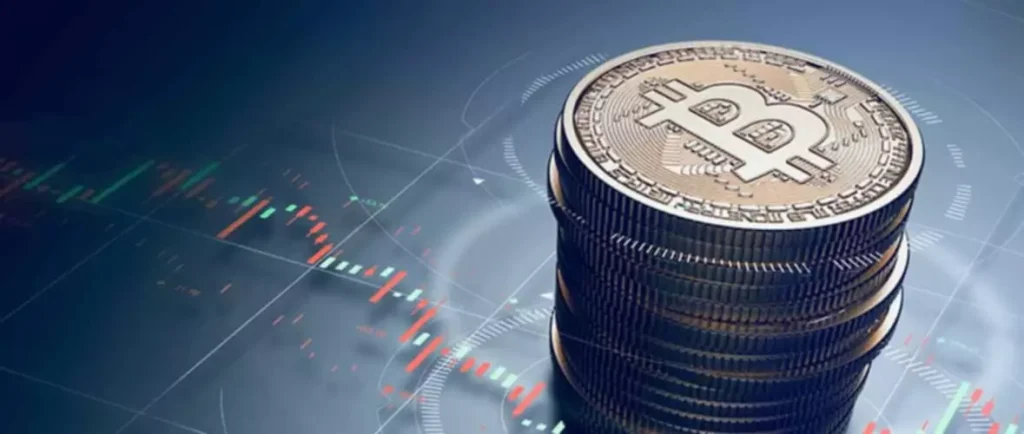Content
However, doing so ensures that the network remains agile and active. As you may know, a large network of computers goes useless because Bitcoins are continuously mined from the network. In addition, the developers obtain rewards in the form of native token of the blockchain for mining as well as burning the tokens.
Well, there are many interesting reasons why coin burning is a good idea. Once a token is sent to a burner address, the coin remains recorded on the blockchain ledger. Still, it is entirely inaccessible to anyone as with no private key, there is no https://xcritical.com/ way for the token to be removed from the wallet. Since November 2021, BNB has largely been on a downtrend, mirroring BTC’s and the overall crypto market’s pitiful performance. Sometimes it is only about economic implications and creating hype.
- Eater wallets do not have any private keys unlike traditional crypto wallets, each of which have their own private key.
- POB is a unique way of achieving consensus in a distributed network, requiring participants – miners and users – to burn a portion of coins.
- When an investor buys stocks of a company, it lends part-ownership of the company’s assets to the investor.
- Instead of removing small quantities of crypto from circulation, individual investors should focus on staking crypto or trading.
- There are many variations of POB which will be discussed in the next section.
This category relates to coin burning models that have been integrated into the core protocol layer of the blockchain. In simplified words, any coin burning mechanism that have been hardwired into the coin’s DNA belongs in this category. There are of course, many motivations for projects to consider a coin burn structure. This guide will delve extensively into the mechanics of coin burning to provide a new outlook on what the future holds for thecryptocurrency market. Binance has done this several times per year; with its most recent seventh coin burn destroying around 830,000 BNB, or over $16 Million. This strategy has a significant advantage, as the size of the burn is largely determined by the market forces and price action.
Some coins use proof-of-burn as a consensus mechanism on the network. There are a few reasons why different cryptocurrencies might want to burn coins. Some projects include this process from the beginning, as part of the protocol itself, while others choose to take it on in some form later down the line.
Why Do Bitcoin Balances on Exchange Matter in the Crypto Markets?
Burning tokens at this point — immediately after our ICO — meant that the value of our token increased, as there were fewer available on the market. In traditional markets, companies that issue stocks may purchase shares back at the market price to minimize the overall amount of shares in the market. For example, the founder of the TRON project, Justin Sun, has been fueling rumors about the burning of TRX tokens for a long time, fueling the hype around the coin. In 2018, the project still burned TRX tokens for $ 800 million, which allowed to increase the exchange rate of the coin and make it more stable. In a sense, the burning of coins can be called a necessity to maintain the normal price of assets.
The Terra Classic community is planning to start burning more LUNC—but traders should be careful they don’t get burned themselves. Burning crypto assets is a way to permanently remove them from circulation. But this assumption may be erroneous, and the growth of the coin may be short-term. The goal of BOMB is to provide users with a risk hedging tool that can withstand inflationary assets. Terra’s implosion will be remembered as one of the biggest moments in crypto history. However, in many cases, burning tokens does little to impact actual supply and demand metrics.
POB is a substitute consensus algorithm created to eliminate excessive power consumption by Proof of Work Consensus. The primary thought behind POB is that users are expected to burn their coins, which allows them to mine in the Proof of Burn Consensus Algorithm. Furthermore, in a distributed network, the burnt portion of the coins creates a unique way of approaching consensus.
Reasons Why Projects Burn Cryptocurrency
These quarterly burns will end once 100 million BNB tokens are in the max supply. Crypto burns, also known as coin burnings, are when a project decides to take a certain number of coins out of circulation. In a boon to those who’ve chosen a HODL strategy, the owners could buy back tokens from holders and burn those coins, thereby increasing the value of everyone’s crypto. This might occur in lieu of traditional dividends which might trigger securities regulations. The burn process could occur as a one-time event or a regularly scheduled one. One example might be the deliberate destruction of unsold ICO tokens.
Another proposal to start burning 1.2% of all tokens transacted also passed a community vote, though details on how such an idea could be implemented were absent. At the other end of the “hard cap” spectrum is Dogecoin, which is considered to be inflationary . Its predictable growth rate also means that its price should be easier to predict, resulting in a definite use-value proposition as a legitimate currency in light of its projected stability.

The wallet address that stores the token is also called the ‘eater address‘. The coins sent to the wallet aren’t visible to the blockchain data. That is why it is not recommendable to burn your own tokens, as the coins remain irretrievable, and you end up throwing money in the air. Through burning, investors get to influence the price stability of the token, which means more investors tend to finance projects that are involved in token burning. Increased liquidity and HODLing perks are just some of the most relevant features that shareholders value in the long run.
A stablecoin may be designed to maintain a fixed exchange rate of US$1, for example. When the demand for a stablecoin increases and its price rises above $1, the smart contract issues more tokens to bring the price down to $1. Conversely, when the price of a stablecoin slides below $1, the smart contract burns tokens to bring the price back up to $1. The Terra project, for example, burned 88.7 million of its LUNA tokens in November 2021. The tokens represented around $4.5 billion in value at the time, which the company said made the event one of the largest layer 1 token burns ever.
The smart contract will send tokens to a randomly generated address that’s inaccessible. Burning crypto may sound absurd to most people mainly because burned tokens are typically valuable, which means that value is being destroyed. CoinDesk is an independent operating subsidiary of Digital Currency Group, which invests in cryptocurrencies and blockchain startups. CoinDesk journalists are not allowed to purchase stock outright in DCG. In a similar way, algorithmic stablecoins automatically mint new tokens and burn them frequently to maintain their dollar-pegged value. A cryptocurrency airdrop is a marketing stunt that involves sending free coins or tokens to wallet addresses to promote awareness of a new currency.
Are Coin Burns Good or Bad?
Crypto Burning removes the tokens from the circulatory chain and limits the supply of tokens in the crypto market. The wallet address that receives the burnt tokens acts as a burner or eater address. So whenever a token goes to a burner wallet address, the token goes away forever and no one can bring it back.
Whilst crypto burning is one of the trending topics in the community, it is not for everyone. But, investors can also participate in this global movement for financial freedom. Staking, yield farming, or HODLling have already made millionaires.
What’s Crypto Market Cap? Why Does It Matter?
Because they want to either deceive the investors like you or cover up the whales. Burning cryptocurrencies, in simple words, stands for sending the tokens to an invalid wallet address. There is no way for anyone to access the data once the coins are shipped. The unusable token address will hold the tokens, but none will be able to retrieve them. Remember burning crypto is permanently removing a certain number of coins from the circulating supply.

And Stellar held a one-time burn of 50% of its supply in November of 2019. This was with the express intent of limiting the number of coins and increasing demand. And there have been several well-known coin burns, generally starting in 2017.
If you are curious about crypto coin burning, we explain the entire process and its reason. With proof of burn, crypto miners need to burn their own tokens to earn the right to mine new blocks of transactions. In return, participants receive rewards in the cryptocurrency they’re mining.
What Does Burning Crypto Mean? A Beginner’s Guide to Coin Burns
The act of burning effectively removes tokens from the available supply, which decreases the number in circulation. Chris Williams tells the story of the blockchain and its controversial leader, Do Kwon. We do not give personalized investment advice or other financial advice. The information on this website is subject to change without notice. The 2.3 million ETH burned so far represents less than 2% of ETH’s supply of over 120 million, hardly a figure that could significantly affect the coin’s price.
As a Consensus Mechanism
Now, Buterin has also burned a further 410 trillion of his Shiba Inu tokens—worth around $6.5 billion at the time of writing—taking them out of circulation. The transaction, crypto burn meaning made on Sunday, can be viewed on Etherscan, which keeps track of Ethereum transactions. However, this doesn’t mean that Bitcoin is a deflationary cryptocurrency.
The algorithms of many cryptocurrencies allow you to burn coins during transactions. Coin burning is a process where cryptocurrency miners and developers remove a specific portion of coins from circulation to control their price. It is a common industry practice to incentivise long-term holding among users, by managing the price through restricting supply. It is a common industry practice to incentivize long-term holding among users, by managing the price through restricting supply. Proof-of-burn is often referred to as a proof-of-work system without energy waste.
If someone is asking for your private keys or recovery phrase, they are trying to scam you 100% of the time. Coin burning gained popularity in 2017 and 2018 when coins like Binance’s BNB token held burning events to lower supply in the hope that it would increase token prices. Proof-of-Stake is a cryptocurrency consensus mechanism used to confirm transactions and create new blocks through randomly selected validators.

